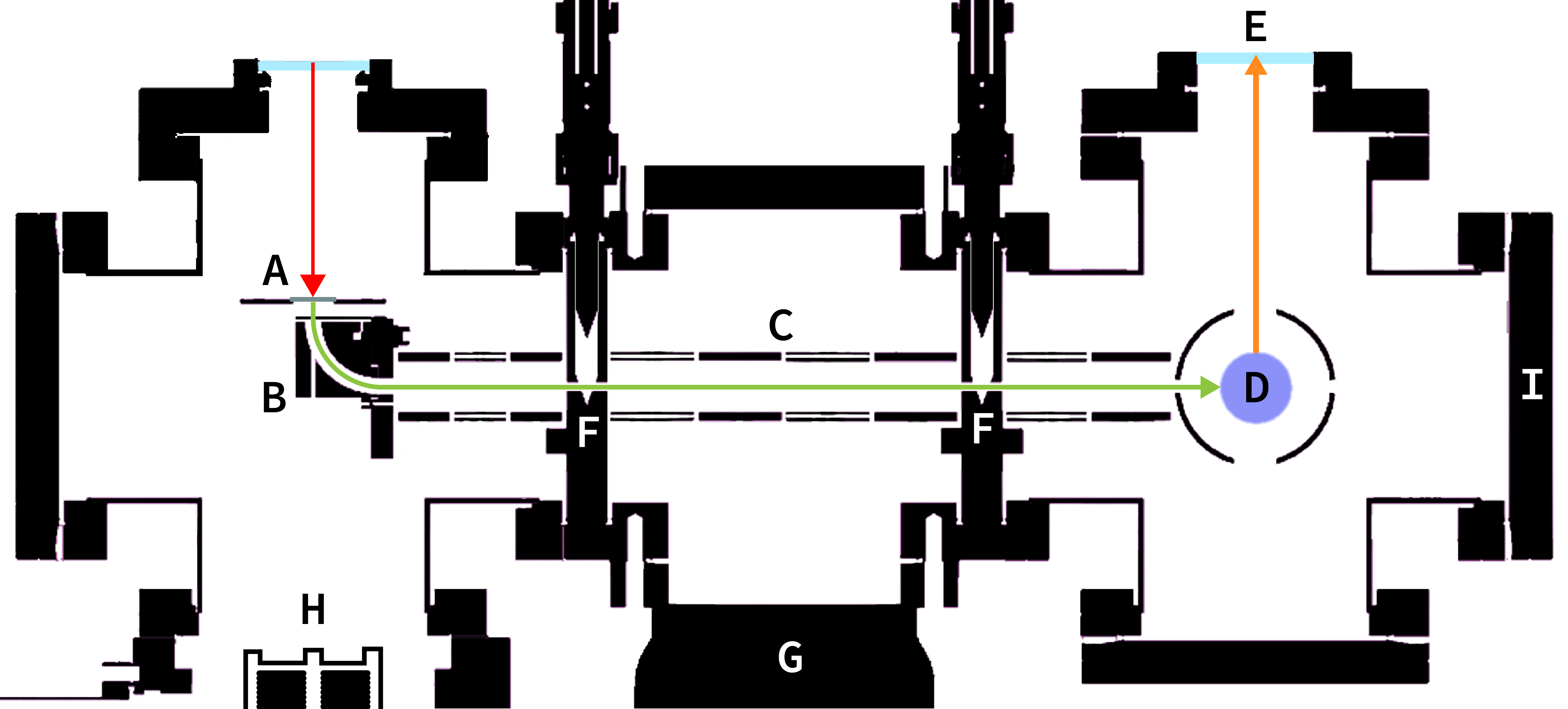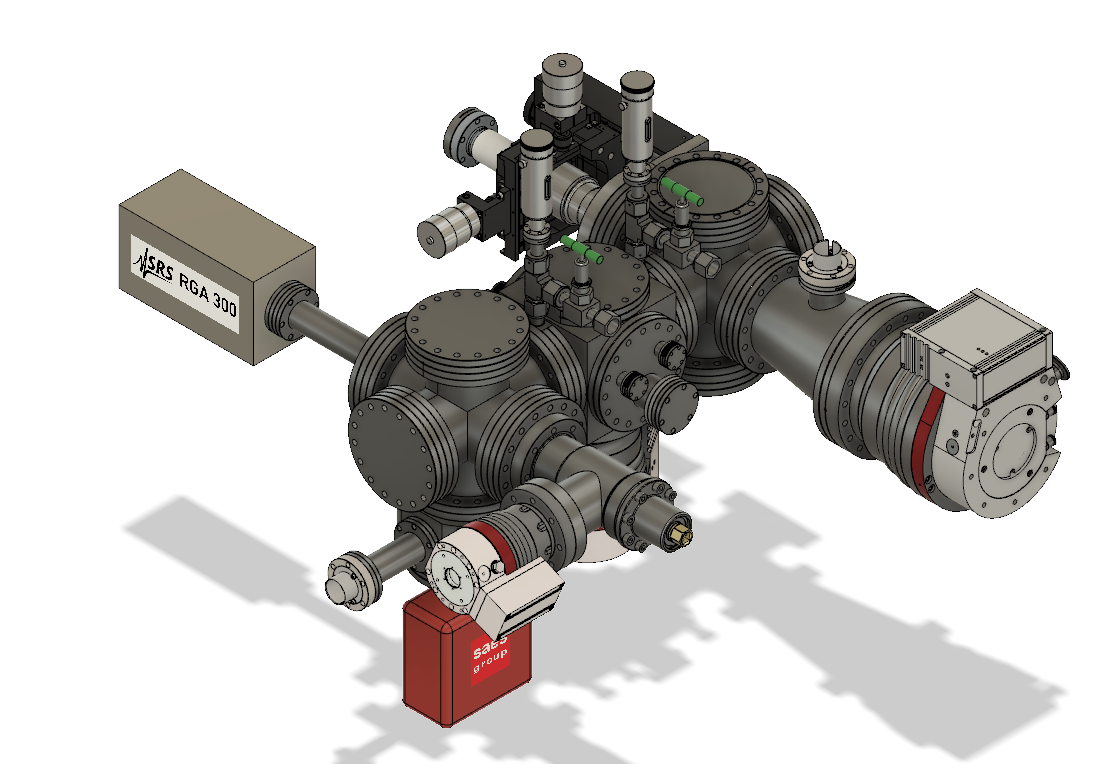Projects
Spin-Polarized Ultra-High Energy Resolution Near-Threshold Collisions Apparatus
|
The Spin-Polarized, Ultra-High Energy Resolution Collision Apparatus is an UHV experimental system that utilizes a gallium arsenide (GaAs) electron source and a trochoidal monochromator to create a spin-polarized electron beam with a uniquely narrow energy spread. The apparatus also contains a target cell, which produces a well-defined gaseous target for collision experiments. Light emitted from these collisions are collected by a high-precision optical polarimeter. In the future, a Mott electron polarimeter will be mounted to the end of the experiment to widen the breadth of optical polarization measurements. As spin polarized electrons are more advantageous than unpolarized electrons for use in any number of threshold and collision experiments, we expect this apparatus will produce many valuable findings. We anticipate this experiment will expand on the discoveries of the accurate electron spin optical polarimetry (AESOP) experiment currently in our lab and will use it to study near-threshold interactions of H2, O2, and Ne impact excitations. This system is currently in the final phases of construction. We anticipate the first production of electron beams by Summer 2024. A schematic of the internal electron optics is shown in Fig. 1 and the exterior of the apparatus is shown in Fig. 2. 
Figure 1: Schematic diagram of the near-threshold/AESOP apparatus showing: (A) the back-illuminated GaAs photocathode; (B) 90 degree electrostatic bend/monochromator; (C) electrostatic transport optics; (D) target gas cell; (E) window leading the optical polarimeter; (F) “plunger” isolation valves; (G) differential turbomolecular pump; (H) NEG source pump; (I) location of a Faraday cup or the transport lenses to the 200 kV Mott polarimeter. 
Figure 2: A CAD design of the entire apparatus with all components indicated for the proposed experiment. |
Publications
|
